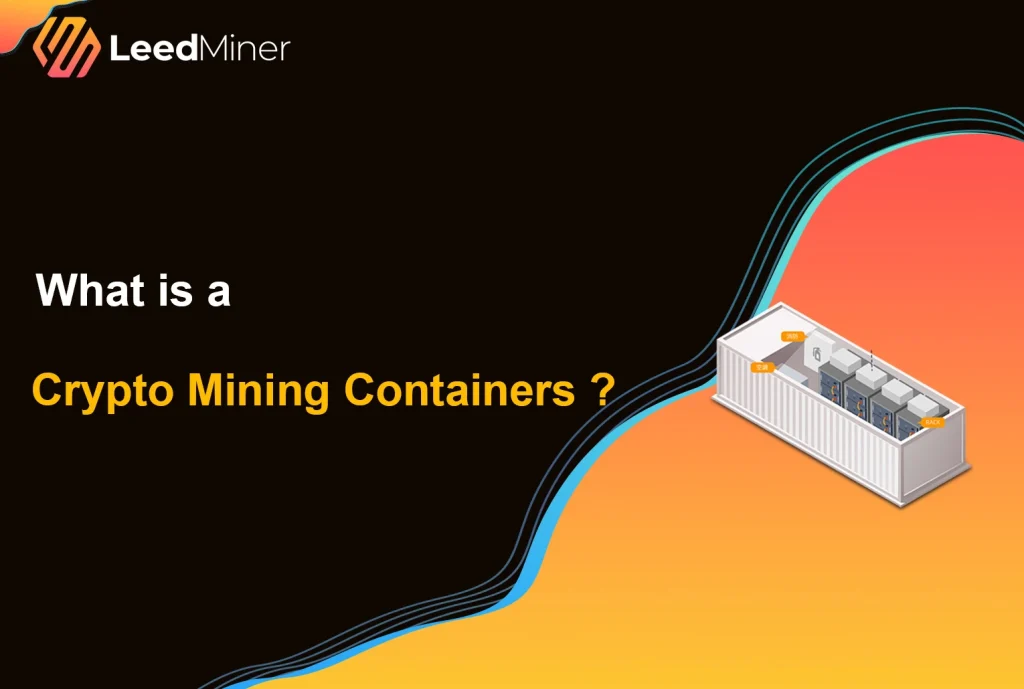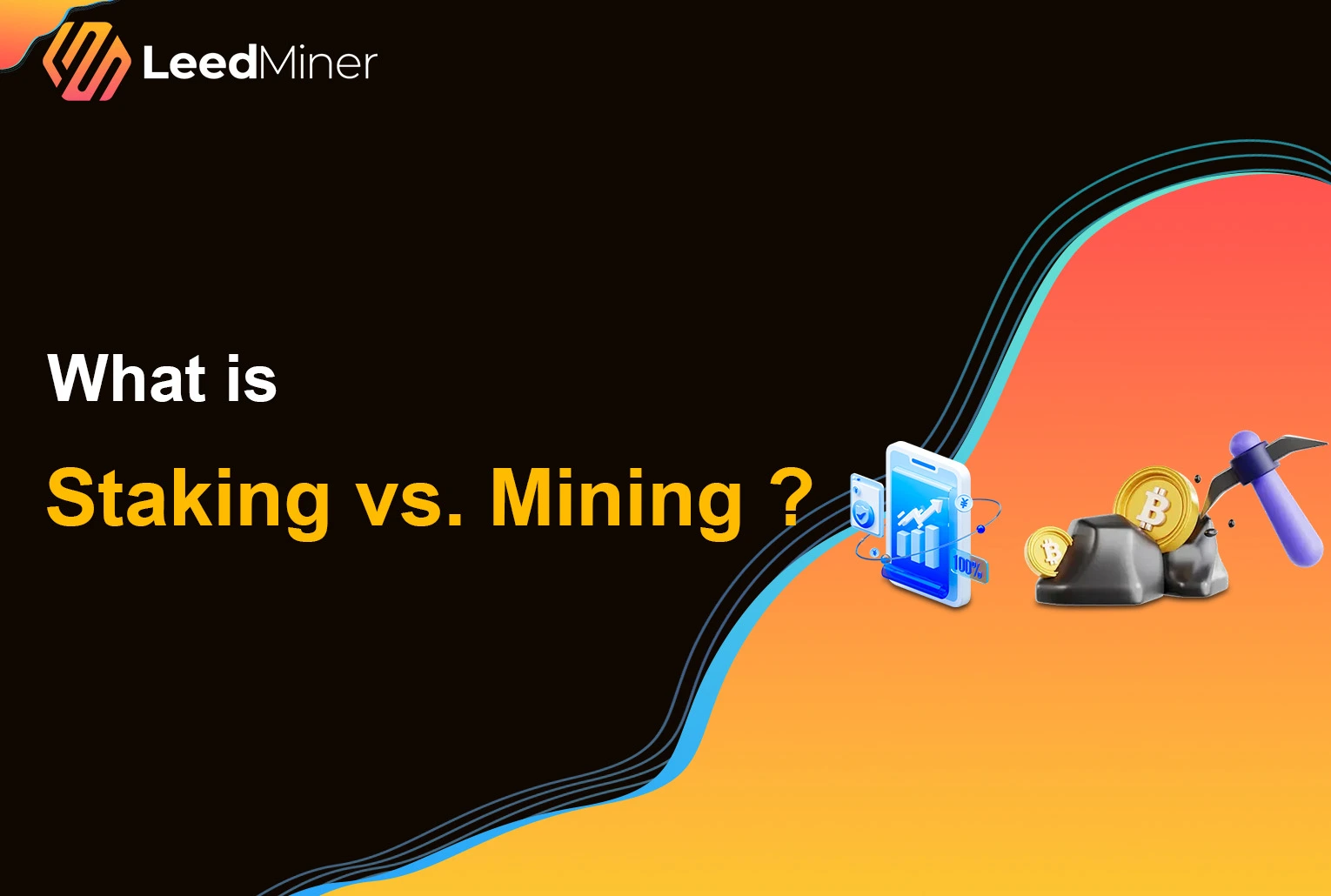What is a Crypto Mining Container ?
Mining101
- tagwu

SUMMARY
As cryptocurrency mining operations grow in scale, the demand for efficient, mobile, and scalable infrastructure has led to the rise of crypto mining containers — a powerful solution that is changing the way Bitcoin and altcoins are mined.
Whether you're a solo operator scaling up or an industrial farm looking to expand globally, understanding mining containers is key to modern mining success.
What is a Crypto Mining Container
How Does a Mining Container Work

Mining containers operate as self-contained, mobile data centers. Here’s how they work:
- Power Distribution: High-capacity input (400–800kW per unit) powers dozens of mining rigs via internal PDUs.
- Cooling System: Industrial fans, air ducts, or even liquid cooling maintain ideal operating temperatures.
- Network Setup: Each miner connects to a local switch, then to the Internet via Ethernet or fiber.
- Ventilation & Airflow: In air-cooled setups, hot air is expelled from the back while fresh air flows in through the front.
- Monitoring & Management: Some containers offer remote monitoring, smart power control, and environmental sensors.
All systems are designed for rapid deployment — often functional within a few hours after arriving onsite.
What’s Inside a Mining Container

A typical mining container includes:
- Miner racks: Pre-mounted or customizable shelves to host ASIC miners
- PDU (Power Distribution Units): Connects miners to high-voltage industrial power
- Cooling: Either high-CFM fans for air cooling or pipes/panels for liquid-cooled miners
- Networking equipment: Switches, routers, and cabling
- Dust filtration: Optional filters to keep contaminants out
- Lighting & safety systems: For on-site inspections and fire prevention
Key Benefits of Crypto Mining Containers
Here’s why containers are popular among mining farms and serious miners:
- Fast Deployment: No need for construction — just plug in and start mining.
- Modular Expansion: Add more containers as your operation grows.
- Mobility: Move to locations with lower electricity rates or better climates.
- Lower Setup Costs: Avoid the overhead of traditional infrastructure.
- Rugged & Weather-Resistant: Operate in remote or harsh outdoor conditions.
- Minimal Local Footprint: No need for permanent buildings or zoning permits.
Limitations and Challenges

Despite their advantages, mining containers have some constraints:
- High Power Requirements: Need access to industrial-grade electricity.
- Noise: Air-cooled containers generate significant fan and miner noise.
- Heat Management: In hot climates, cooling can become a bottleneck.
- Security: Containers must be secured physically and digitally.
- Compliance: Some regions regulate portable data centers or crypto operations.
Common Use Cases
Crypto mining containers are ideal for:
- Large-scale mining farms seeking quick deployment
- Mobile operations moving between jurisdictions or energy sources
- Private or enterprise miners who want scalable, off-site infrastructure
- Green energy setups, using containers near solar or hydroelectric farms
Buy or Build
You have two options:
Buy Prebuilt Containers
- Offered by Bitmain, MicroBT, WhatsMiner, and other manufacturers
- Comes with integrated power and cooling
- Higher upfront cost, but ready to use
Custom-Build Your Own
- Retrofit standard shipping containers
- More flexibility on layout, cooling system, and power setup
- Requires technical expertise and compliance knowledge
The Future of Mining Containers
As the mining industry matures, containers are evolving:
- AI-Powered Smart Management: Automatically optimize temperature, power, and performance
- Stackable Designs: Create multi-level mining farms
- Hybrid Energy Compatibility: Integrate solar, wind, or geothermal
- Support for Immersion Cooling: Especially for high-performance ASICs
- Compliance-Ready Units: Built with KYC/AML or local power grid monitoring
Mining containers are no longer just a trend — they’re a pillar of future infrastructure.
CONCLUSION
Crypto mining containers provide a flexible, cost-effective, and scalable solution for serious miners. Whether you want to scale rapidly, reduce costs, or relocate operations, these portable units allow you to mine smarter, not harder.
As electricity pricing and global regulations shift, the ability to pick up and go could make all the difference.
FAQs on crypto mining container
What is a crypto mining container?
Why use a mining container instead of a building?
What power and cooling does it need?
Most containers require industrial-grade power (400–800kW) and either air cooling with fans or advanced liquid cooling systems for optimal operation.






